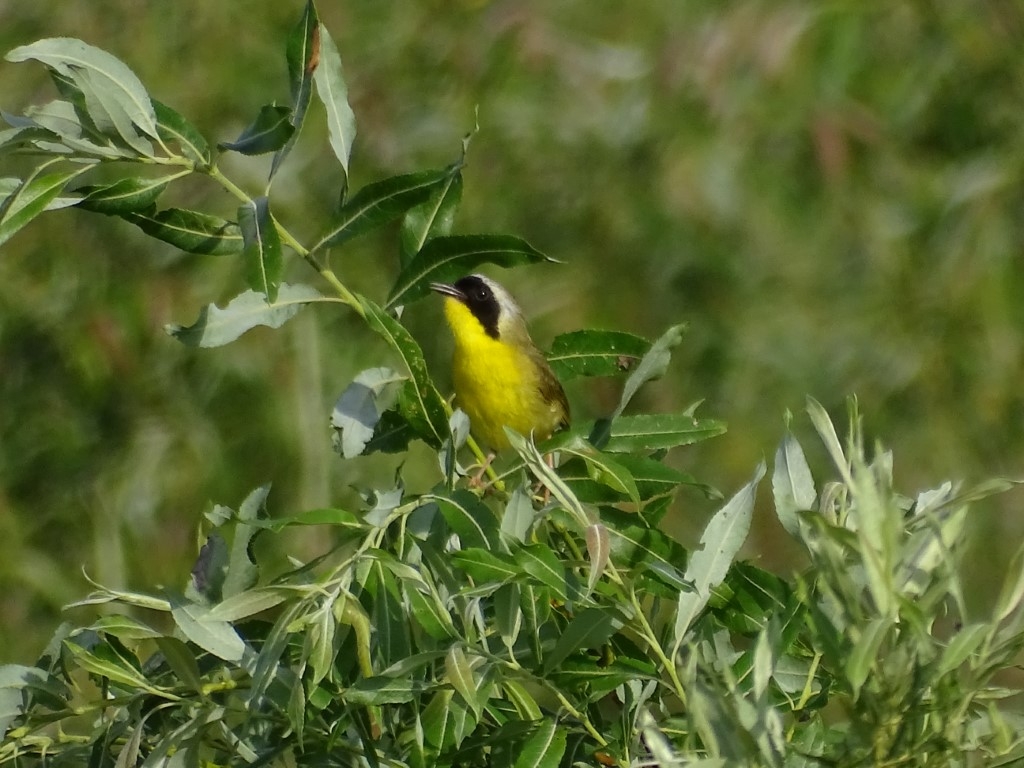Ten years ago I remember my friend and I spending hours trying to figure out what bird was singing that witchety-witchety-witchety three-triplet song over and over again everywhere we went birding. Back then we didn’t have the ability to use the Merlin app to help us out, so we kept sorting through bird recordings and checking guidebooks for clues but with no luck.
That year I added the Common Yellowthroat to my life list of birds once we finally spied one of the sneaky little culprits singing right in front of us. Now I not only hear them everywhere (including my own backyard during migration season), but I also see them throughout the summer.
I love their little black masks:

Once you learn a bird’s habitat preferences it’s much easier to find them. Common Yellowthroats are warblers, but unlike many of their relatives that spend their time searching for insects in tall trees, this warbler can be found in shrubs, grasses and undergrowth. It’s also one of the few warbler species that breeds across much of the U.S. in the summer months.

Here is an interesting fact about Common Yellowthroats from the Cornell Lab of Ornithology’s All About Birds website: “Brown-headed Cowbirds often lay their eggs in the nests of Common Yellowthroats (and many other songbird species). This is called brood parasitism, and it’s detrimental to the yellowthroats, so they’ve developed a few defenses. They desert a nest if it contains a cowbird egg, or if their own eggs have been removed or damaged by a visiting cowbird. They may build a second or even a third nest on top of a parasitized nest.”
